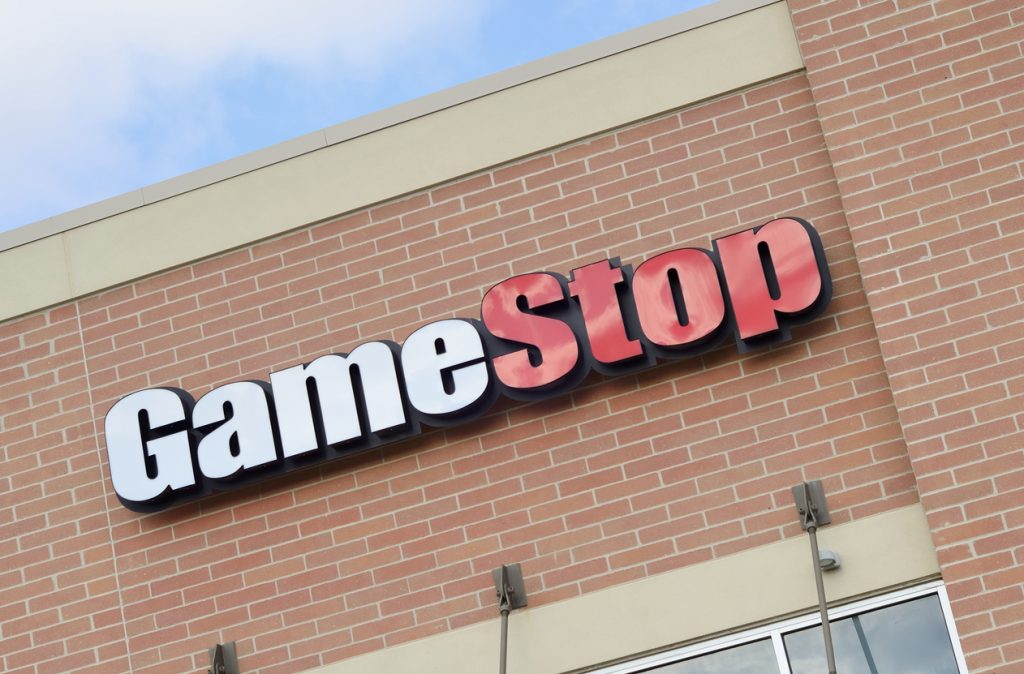Note: It was announced in November 2023 that MoneyOwl will be acquired by Temasek Trust to serve communities under a re-purposed model, and will move away from direct sale of financial products. The article is retained with original information relevant as at the date of the article only, and any mention of products or promotions is retained for reference purposes only.
______________
Find out how and where to trade options and why options trading takes market guesswork to a totally different level.
When GameStop’s stock price appeared to be going to the moon, there were several stories of ordinary people who became millionaires or covered their debt with their winnings overnight by trading options on the stock. Across the world, including in Singapore, people started to ask how and where to trade options.
You probably expect me (an adviser) to simply say, “Just don’t!”, and point to the regrets of those who got caught on the wrong side of the trade with big losses. But this is like asking someone to never try smoking when every corner shop is selling cigarettes and many of your friends have tried it.
The fact is the appetite of retail investors (or traders) has been whetted. So, I thought it better to help everyone understand some aspects of options and trading, so you can play more safely if you do decide to play. Even if I would advise against it.
What are options?
Options are instruments that confer its holder the right to buy (in the case of “call options”) or sell (in the case of “put options”) an underlying security at a pre-determined strike price by a certain pre-determined date. The price the buyer pays for the option is called the “premium”.
Call options
If you own a call, you want the stock price to go up. Using the prices as of the close of the first week in February, GameStop’s last traded stock price last Friday was US$63.77. A call option on GameStop with a strike price of US$80 per share (about 25% above the last price of US$63.77) expiring on 26 February 2021 cost US$17.31 last Friday.
If GameStop’s stock price increases beyond the strike price plus the premium you had paid (and any other costs) at any time before the expiry, you’ll make a profit when you exercise the right to buy the stock at US$80 and then immediately sell the stock at the higher, prevailing market price.
In this case, assuming no broking charges or taxes, this breakeven price is US$97.31, which is a massive 52.6% from the last stock price close of US$63.77. Put another way, GameStop’s price needs to increase by 52.6% before you break even on your bet that the stock price would increase at least 25% (which is how much the strike price is higher than the last traded price).
Put options
If you own a put, you want the stock price to go down. At the end of last week, a put on GameStop with a strike price of US$48 (about 25% below the last stock price of US$63.77) had a premium (cost) of US$11.85. You own the right to sell the stock at US$48 and you pocket the difference between that and the prevailing, lower market price when the stock moves down. You start to make money when the GameStop price moves below the strike price minus the premium. In this case, US$48 minus US$11.85, or US$36.15, which is 43.3% down from the last stock price.
What does this mean?
From these examples, the first thing we notice about options is that the premium is a fraction of the underlying stock price. That’s one reason why options are called a leveraged play. If I had US$1,000 last Friday at closing, I could have bought only about 15 shares of GameStop stock, but I could buy 57 units of the abovementioned call option. In this way, it’s similar to margin trading, or borrowing to trade.
However, options are even more complicated and riskier than margin trading. From the above examples, we observe that whether you make money from exercising the option depends not only on getting direction or even the ending stock price levels correct, but also on how much you pay for the option. The strike prices of the call and the put were roughly 25% higher and lower from the last traded stock price, respectively, but it would take much larger degrees of increase or decrease to break even, because of the price of the options.
What, then, contributes to option prices?
Option pricing is a Nobel prize-winning venture (one being the Black-Scholes-Merton model), but a key input is volatility. Options are more expensive when the underlying stock is highly volatile. If volatility is high, the buyer of the option is paying a lot more and the breakeven levels are further away.
Why is this so? If you think about it, when a stock is increasingly volatile, it means that the likelihood of hitting strike prices that are further away has increased. Thus, the person selling you the option (usually a broker as a market maker) would need to be compensated more for the risk that you will exercise the option against him.
For the two options mentioned above, the Implied Volatility is more than 350%, meaning that the options are very expensive. We note also that the volatility isn’t the same for calls and puts; there is a skew that can change over time.
Besides exercising the option, you can also sell the option (before it expires) to someone else without touching the underlying stock. Whether you can make money today by selling an option you bought yesterday depends, again, on direction, strike price and volatility compared to the day before.
Take a look at the table below, for the one-day movement between the prices of the GameStop stocks and the two options mentioned above. As expected, when the stock goes up, the price of the call option goes up and the price of the put option goes down. However, you see that the call and put don’t move by the same amount.
| Security | Closing Price on Thu 4 Feb 2021 (USD) | Closing Price on Fri 5 Feb 2021 (USD) | 1-day % change in price |
|---|---|---|---|
| GameStop (GME) | $53.50 | $63.77 | +19.2% |
| GME 26 Feb 2021 80 Call (strike price $80 | $12.25 | $17.31 | +41.3% |
| GME 26 Feb 2021 48 Call (strike price $48 | $13.75 | $11.85 | -13.8% |
Delta, Gamma, Theta – What are they and how do they work?
Delta
There are three Greek terms here at play. One is called delta, which is the change in the price of the option for every percentage change in the price of the underlying stock. The reason why what happens in the options market affects the underlying stock prices is because the brokers or market makers do “delta hedging”.
When you buy a call option, the broker who sold it to you bears the risk of having to deliver the underlying stock to you if you exercise the option. To hedge himself against having to buy it at the higher price when you exercise, he’ll go into the market to buy some of the underlying stock.
Usually, he’ll buy it according to the delta. If an option has a delta of 0.5, he’ll buy 0.5 of the stock to hedge against that position. To think about it simply, you can treat delta as a kind of probability of being exercised.
Gamma
Gamma is the rate of change of the price of the option, or the delta of delta. When there is a lot of demand for calls or puts, the hedging dynamic ends up in a self-reinforcing loop called a gamma squeeze, which exacerbates the price movement in that particular direction.
When investors started to pile into GameStop calls at the end of January, traders had to delta-hedge by buying the stock, except that they had to buy a lot of it. All price movement is due to demand and supply, and this heavy demand pushes up the stock price.
But as the stock price goes up, the call options get more and more valuable as they move closer to the strike price or get more and more “in the money”. So they have to buy even more to hedge.
The negative gamma squeeze happens too and famously did so in the 2008 Global Financial Crisis across credit and stock markets. Therefore, we see that options, with all their Greeks, are quite a complicated trading instrument, on top of being a leveraged play.
Theta
Finally, there is also Theta – time decay. There is no such thing as “buy and hold” options, unlike for stocks. If you don’t exercise the option by a certain time, it expires worthless. The impact of Theta sets in at an exponential rate towards the end of the life of the option.
What do you need to do to succeed at trading options?
Let’s summarise then, what you need to be able to do to succeed at trading at options:
1. Get the direction of the price of underlying security correct (up or down)
2. Get the degree of the price move correct
3. Get the direction of the volatility movement correct
4. Get the degree of the volatility movement correct because it affects both your breakeven price (if you exercise) and your option prices (if you trade the option itself).
5. Be aware of skew and accept the impact of delta and gamma on your option prices
6. Get the direction and degree of the price, as well as the direction and degree of the volatility movement correct, within the correct time frame taking into account the non-straight line Theta or time decay.
We can see from this how options trading takes market guesswork to a totally different level. That’s why I used the word “play” at the beginning of this article: it’s ultimately a gamble. Granted, the odds are much better than those in the casino. But they are still greatly stacked against you, which makes it difficult to repeat a quick, big win over and over again. This makes options trading, or any kind of speculation for that matter, an extremely unsuitable financial plan on which to build your life goals.
So, if you must, please dabble in options only with small sums you can afford to lose completely and only if you have fulfilled important preconditions. These preconditions are:
· Being in good financial health, with an emergency fund of at least 6 months;
· Adequate protection against life risks that can cause your plan to fail;
· A core investment strategy centered on a globally diversified portfolio comprising the staples of equities and bonds – assets whose value are derived from real economic activity – with an asset allocation suited to your need, ability, and willingness to take the risk.
Otherwise, you’ll not only bring unto yourself a lot of risk, but also be consumed by stress as the second-by-second market movement late into the night becomes a make-or-break situation for you. If life is too short for this, then investing regularly in a suitable portfolio in line with with a comprehensive financial plan (and keeping to it) would actually turn out to be your best bet.
MoneyOwl Pte Ltd is a financial adviser and fund management company licensed by MAS. We are a joint venture between NTUC Enterprise Co-operative Ltd and Providend Holding Pte Ltd. Capital Markets Services Licence No: CMS100758.
Announcement: With effect from 1 June 2022, MoneyOwl is a 100% NTUC Enterprise (NE)-owned company.




